F
FishingMagic
Guest
Dave Coster – My Way with Angling Myths
BREAKING BREAD
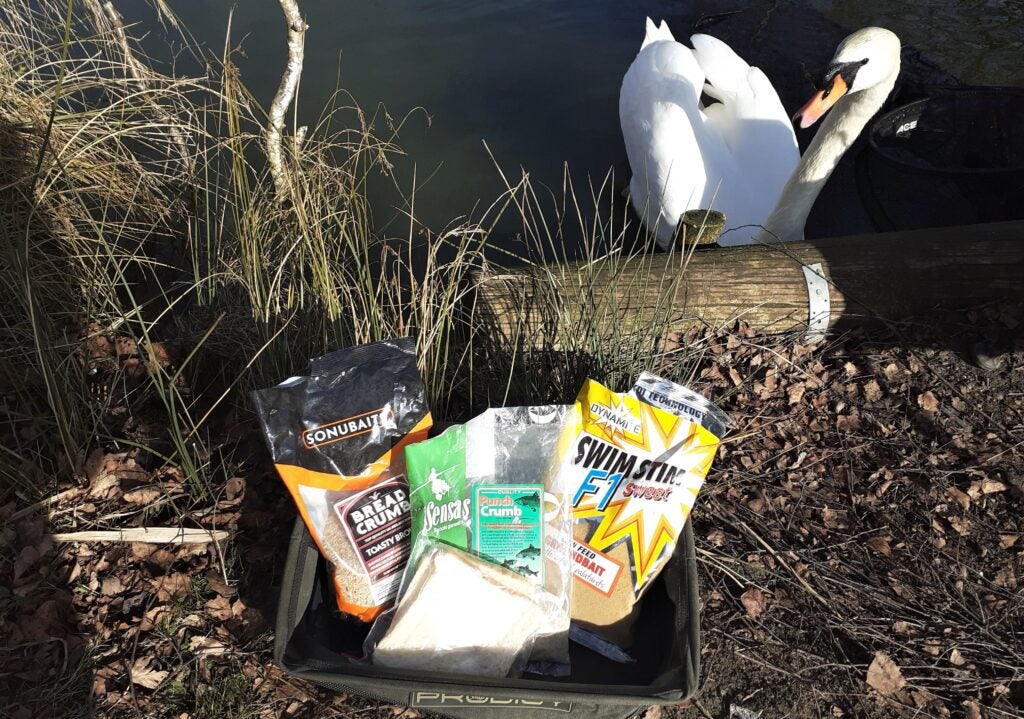
A message that was drilled into me when I first started fishing was not to tinker with bread. Experienced anglers and publications preached to avoid tainting this bait in any way. But as I boarded the club coach one day, I saw one of the older anglers with a big ball of bread paste in his hands, moulding some soft cheese into it. He obviously hadn’t read the right books! He worked on his special concoction all the way to the venue. What made it even worse was his heavily nicotine-stained fingers, which were helping to add a dirty orange tinge! To confound all the theories, when we got to our destination, forty-a-day man won the outing by a mile. Then there was canal maestro Billy Makin, using white pieces of punched bread in combination with a red continental groundbait. What was that all about? Had he forgotten his proper crumb feed when he made his videos? Having finally pushed all the taboos aside, I’m no longer afraid to experiment with bread.
BIG BUTTS
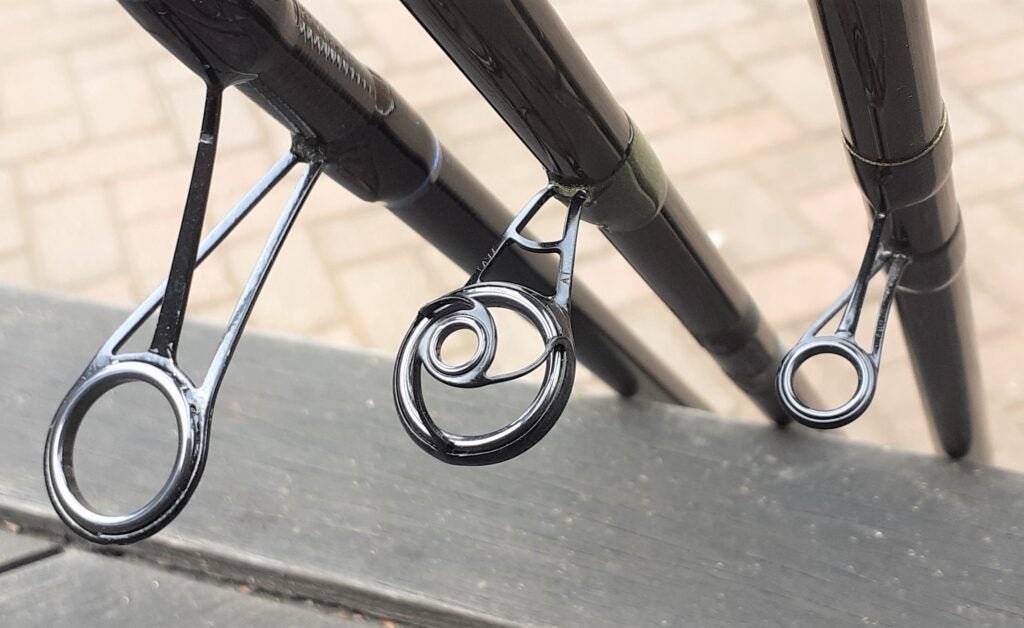
When I was working for Hardy and Greys, I saw something that suggested having big butt rings on rods might not be right. There is an award-winning concept in their Alnwick museum, developed way back in 1920. It’s a butt eye with a funnel, which channels the line through a small opening. This caught my interest because the new Microwave guide concept from American Tackle works to a similar principle. I tested some identical feeder rod blanks fitted with large and small butt guides. Amazingly, having a smaller ring directly above the reel helped to cast much further than a big diameter one. A top boffin explained what was happening. When line travels through a smaller first guide or ring, the coils of mono leaving the reel straighten out, creating less friction as it travels up the rest of the rod. An initial short burst of extra friction is far more beneficial than if the line coils all the way along the blank, in the way it tends to do with oversized butt rings.
FAKING IT
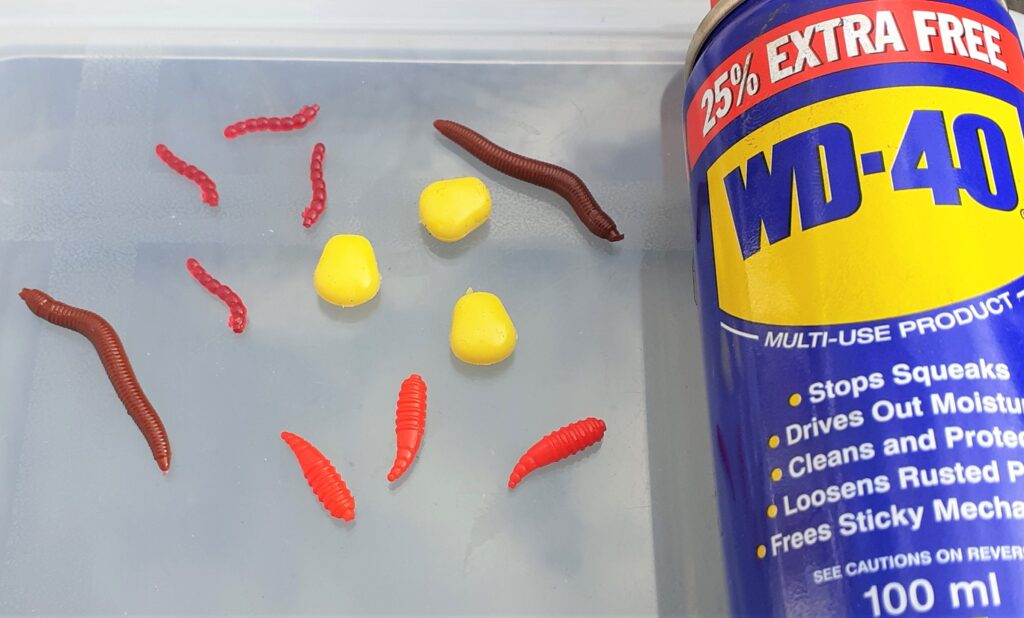
We can all understand mug fish making mistakes, engulfing imitation rubber baits that look like the freebies they have been feasting on. But anglers also catch streetwise specimens on synthetics, even when not surrounding them with anything that looks remotely the same. This ability to score so effectively has raised debate. Some people are adamant it’s the machine oils used in the moulding process that attract fish, leading to artificials being doused in all sorts of exotic flavours. The flavour aspect doesn’t wash with me. I suspect it’s a combination of visual interest and presentation, all about putting the fake stuff in the right place at the right time. Just look at the tubes of foam carp anglers currently use on zig rigs, which look like fag ends in some cases. I’ve seen carp and chub mistakenly swirling for discarded cigarette butts, so no surprises if they do the same for something else that looks vaguely like grub, particularly when it’s sitting in plain sight.
CLEAN WATER
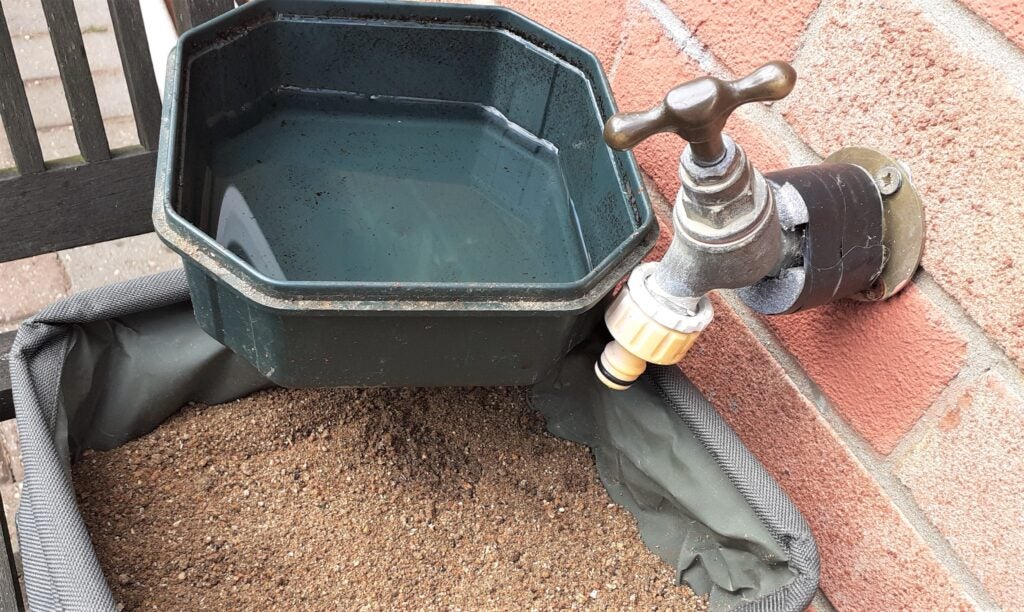
A common anathema is not to use tap water to knock up groundbait, due to the amount of chloride it contains. The truth of the matter is, the amount of sodium and calcium chloride in our drinking water would have to be increased dramatically – by at least half – to have any effect. Only then would it influence the flavour of anything made with it, such as tea and coffee. Because lake or river water isn’t readily available when knocking up groundbait at home, tap water it has to be. I prefer to get mixes ready well in advance, rather than hurriedly on the bank, which doesn’t provide enough time for moisture to be properly absorbed. Rather than having poor consistency feed with lots of floating bits, I don’t have any problems pre-preparing my favourite groundbait recipes, which mostly have strong enough aromas to mask tap water, and just about anything else. Any anomalies in groundbait are speedily diluted once it’s fed into a big volume of water anyway.
DRUG FREE
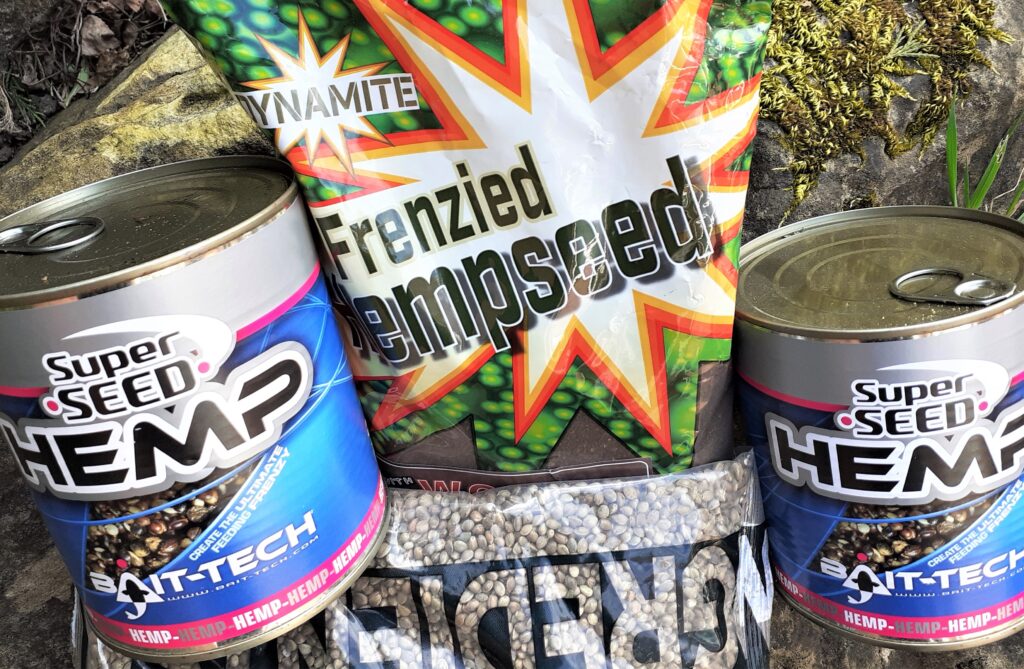
Hempseed has lots of myths surrounding it, due to being part of the cannabis plant family. But the type of hemp we use can’t be grown into the stuff joints are made from, and it certainly isn’t powerful enough to be addictive to fish. Fishing hemp is derived from industrial plants, grown to produce hemp fibre for rope making and certain types of cloth. In my opinion, fish are attracted to hemp because it leaks off loads of attractive natural oils, alongside having a pleasant nutty aroma. It also resembles small water snails, a natural food for many species. The only reason cooked fishing hemp can appear to be addictive, is if it is fed regularly or in large quantities, to the point fish almost become reliant on it. That happened many years ago when I remember “Hempseed Corner” being a favourite hotspot on one famous river. The seed was banned on many venues due its overuse. Cooked fishing hemp isn’t a drug, otherwise it wouldn’t be so widely available.
MAGIC MIXES
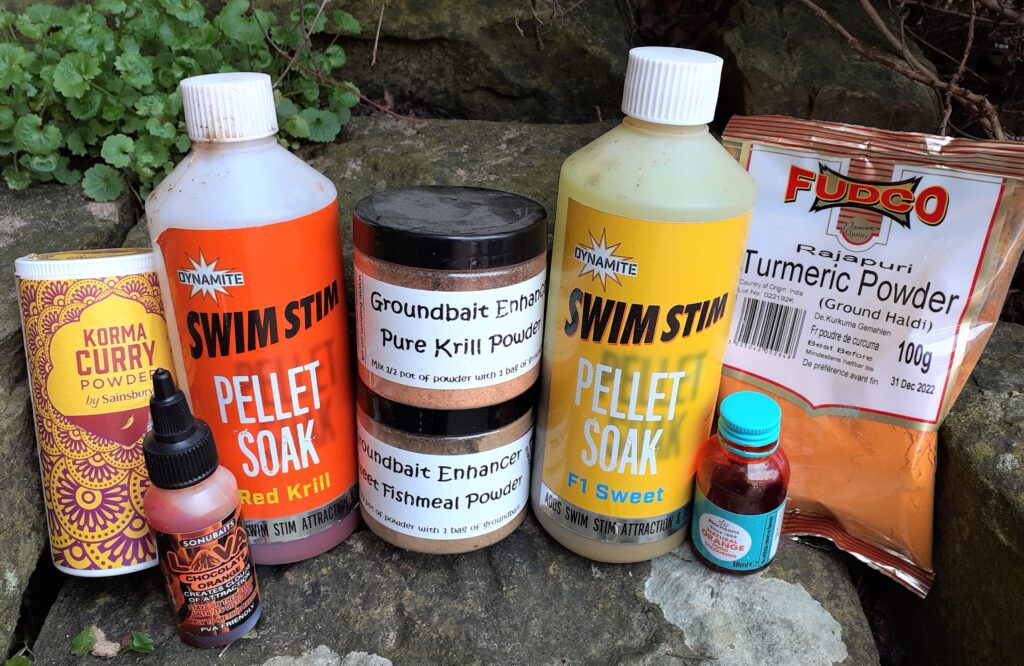
Many people have tried to concoct secretive flavours and additives that fish can’t resist. Most of these potions arrive with a big fanfare, enjoy a brief period of success, and then fade away into obscurity. I remember a bubble gum flavoured powder that was supposedly a must if you wanted to win matches, along with an evil-smelling liquid anglers were secretly painting onto their hook baits. You might as well not turn up if you didn’t have any of the X-factor, was the message the advertising told us. But still the same old faces continued to catch all the fish. All the glitzy hype has gradually been replaced with flavours that do seem to make a slight difference. Most of us have learnt that sweet-smelling baits and feeds are better for silvers and cold-water situations. Stronger fishmeal versions work more effectively in fair weather and when fish are more active. Certain ingredients may be more potent at different times, but none contain a magic formula.
THE FRESH TEST
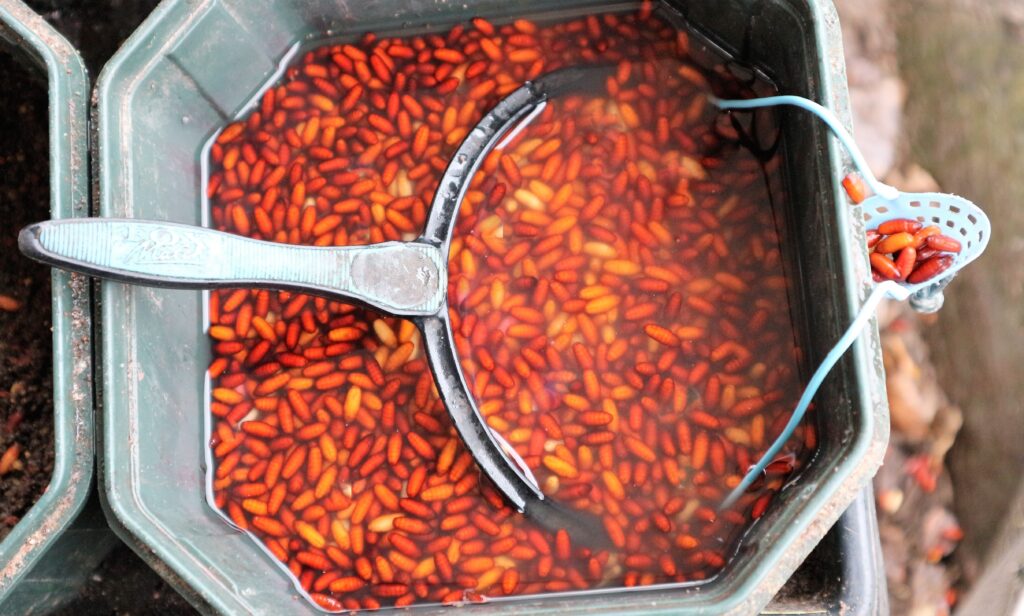
We live in an age where convenience is everything. Many anglers have changed the way they fish, relying on quick-fix baits like tins of hemp, corn and meat, along with pre-packed pellets and tubs of ready-to-go hook offerings. But convenience doesn’t work quite as well with conventional baits like maggots, casters and worms. If you’ve ever had the unfortunate experience of trying to catch with a bag of grey casters, a pint of dodgy maggots, or a tub of half-dead worms, you will know these options don’t come anywhere close to super-fresh gear. Some will have you believe it’s the angler’s fault, not down to the bait, when nothing is being caught. Don’t believe this, because all the top people I’ve ever had the pleasure to fish with are fastidious about the bait they use, whether it comes from a tin, bag or in live form. You can fish brilliantly but fail miserably if your bait is below par. Quality bait gives you confidence and quite simply pulls more interest.
SEEING RED
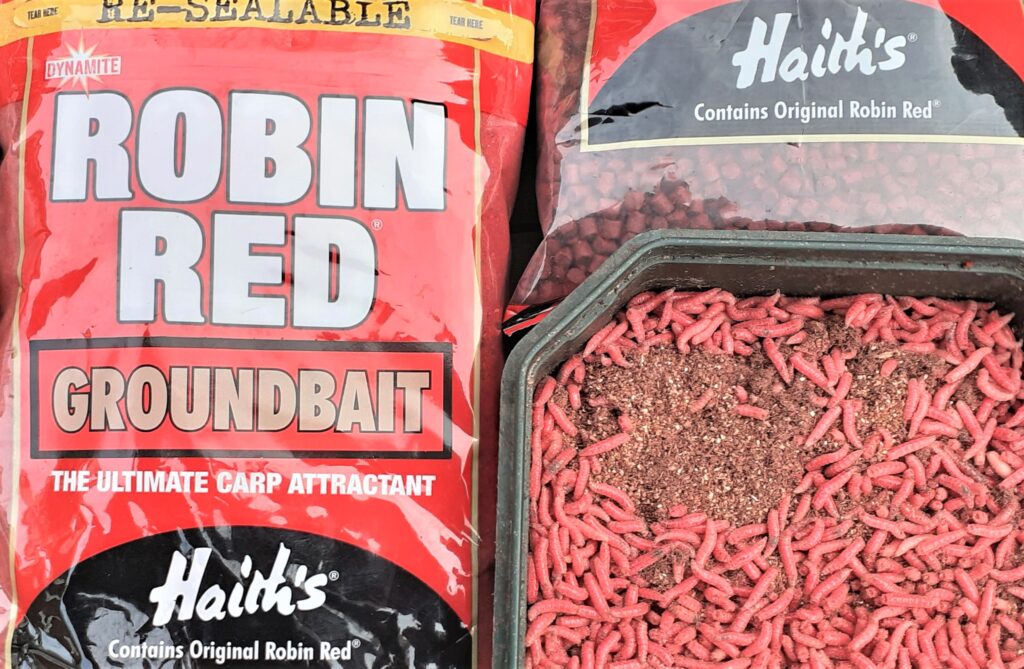
I’ve read lots of stuff about fish not being able to see red below a certain depth, to the extent that someone even produced a red line that was supposed to be invisible in water. It’s something to do with light penetration and physics apparently, but none of that affects me when catching on favourite baits like red coloured maggots, pinkies, bloodworm, pellets, wafters and groundbait. Even in the murkiest of waters, red is a top hue for catching fish like bream, roach, rudd, hybrids, carp, chub, perch and tench. Part of the reason freshwater fish home in on red, I suspect, is due to bloodworm being such a major part of their diets. They root about for this midge larvae in thick silt and because it’s bright red, it stands out like a sore thumb when disturbed. I believe fish can see this hue, otherwise why do predator anglers use red bait flags and poppers to give their dead baits extra appeal? I know lots of anglers who would be lost without red, including me.
INVISIBLE TOPS
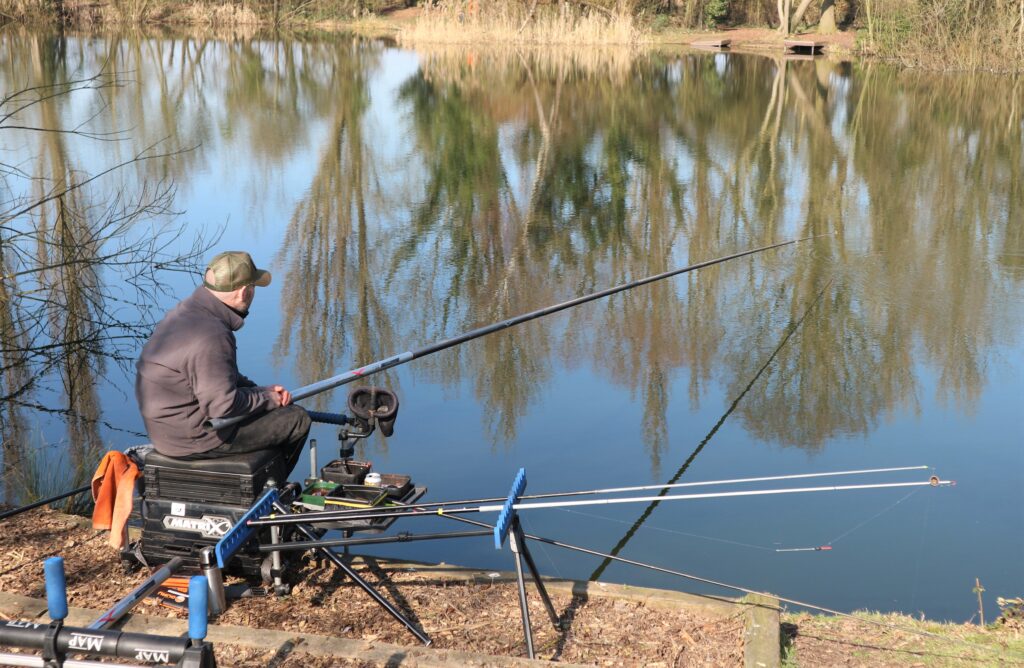
A recent fad has been to paint top sections of poles white or grey, the theory being that fish won’t be able to see them hovering overhead. However, no matter what colour pole sections are, they will still produce a shadow, which probably looks black from below. Some have argued that herons are light grey, so fish can’t see them in the margins or shallows. If this really is the case, why do so many anglers wear camouflaged clothing, and not grey? Divers tell us the surface of water looks silvery when looking up, which gave us silver, white and clear plastic floats. But having used such designs in clear, shallow water, I’m not at all convinced this is such a good move. I remember trotting a small stream with a silver-coloured float and watching a shoal of dace part to let it through. I also recall using a clear waggler when trying to catch mullet in the crystal-clear Mediterranean, which spooked the fish so badly in the bright sunshine, I think they fled to the Atlantic Ocean!
INDUSTRIAL WHISKING
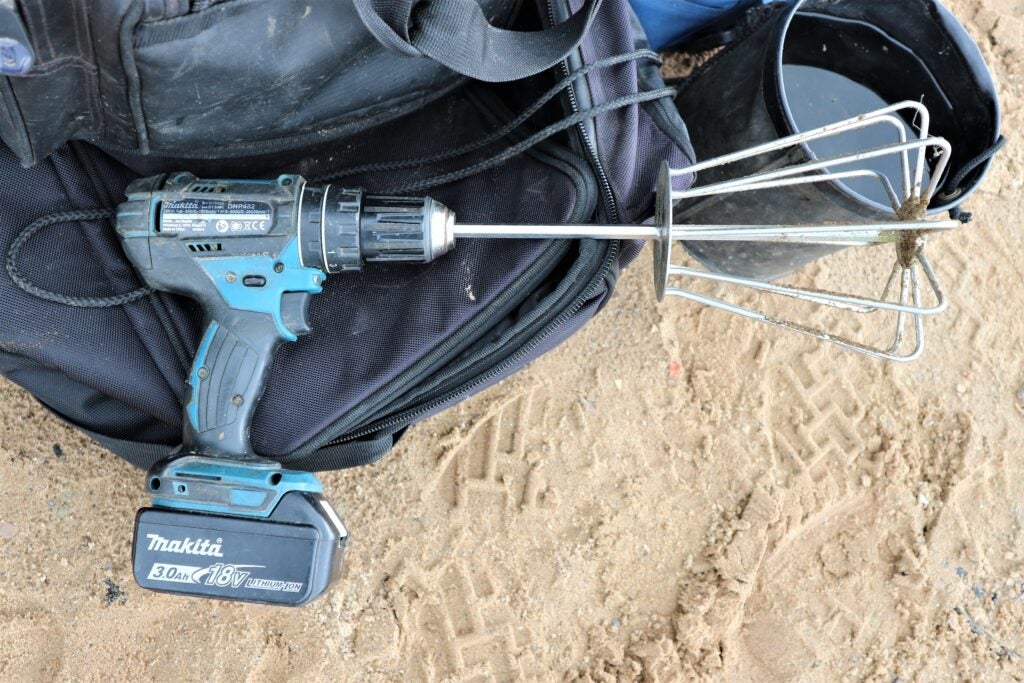
We all love keeping up with “in” gear, but need to be careful not to be fooled into becoming too weighed down with it. I’m always interested in new ideas if I think they will benefit my results, but occasionally will draw the line. Most of my mates have so much stuff now, they have to use four-wheeled trollies to get it to their swims. The items that really irk me most are the giant builder’s drills used for mixing groundbait. Even when some of my pals are several pegs away, I can hear what sounds like a helicopter taking off as they mix their groundbait with huge metal whisks. Doing the same job by hand might take longer, but does it really make much difference, particularly if you knock up your feed the day before an outing? I go fishing to get away from noise pollution, plus I don’t want to invest in a van to accommodate even more equipment. I also like knocking up groundbait by hand; it gives a much better idea if the consistency is right.
WINDING UP
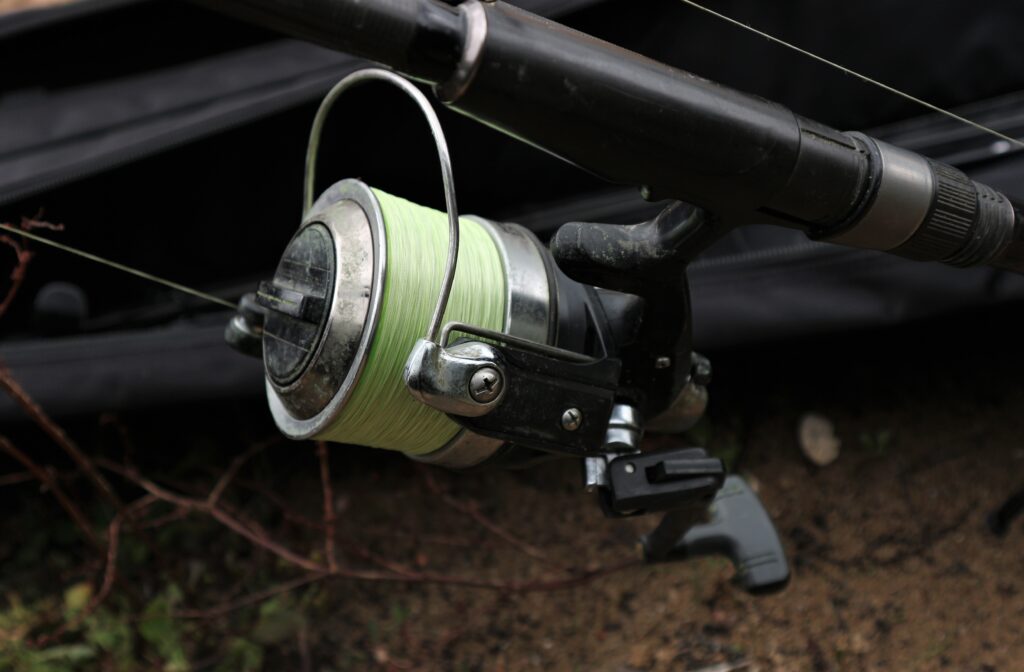
Big pit style reels specimen anglers use are creeping into feeder fishing, especially now spodding is more widely practised. I can understand their use for the latter purpose, in combination with a pokey blank, but don’t believe all the hype they are essential if you want to cast any type of feeder more than 50 metres. Stepping up to a 4000-size reel makes good enough sense for long chucks, even perhaps a 5000. With super-thin braid it’s easily possible to launch streamlined feeders to the horizon with designs like this. So, why would you want to unbalance super-lightweight, high-carbon feeder rods with an even bigger brute of a winding machine? The spools on most standard feeder reels are big enough to quickly crank in mono, or thinner braid, without excess line twist. The problems I see with big pit designs are they lead you into using brutish, over-stiff rods to match up with them, followed by wanting to cast even more ridiculous distances.
NOT BEING FOOLED
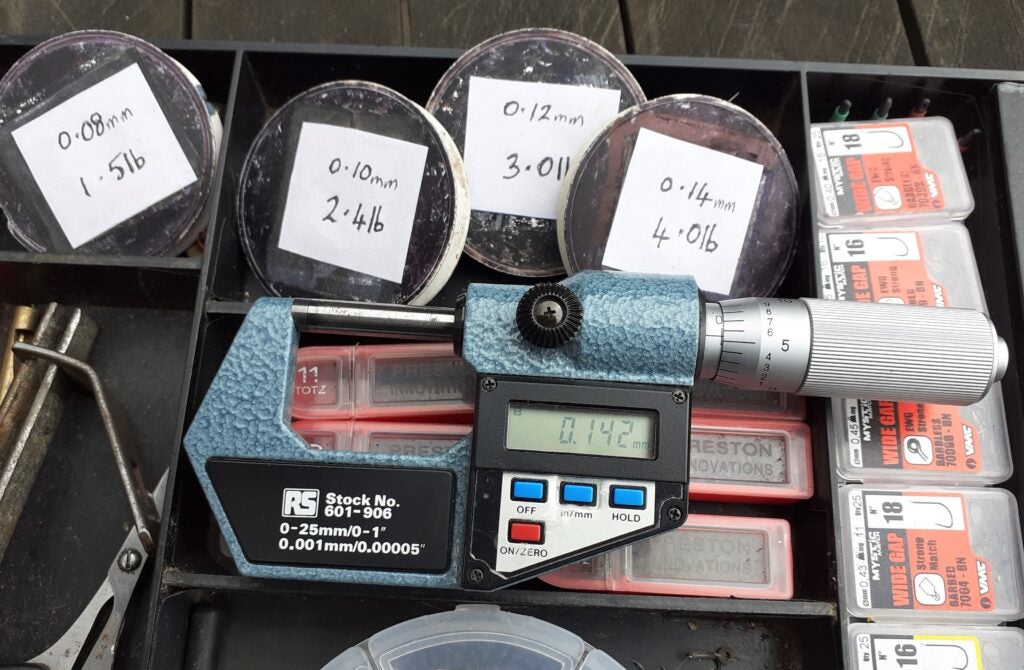
It amuses me when sponsored anglers rave about rig lines, saying their brand is the best for its stated diameter. Of course it is, because it’s often one or two gauges thicker than stated! That’s why I use a micrometer to find out exactly what diameter my favourite hook length lines are. I also test their breaking strains, another area that tends to be highly exaggerated. I want to know exactly what I am using, rather than being fooled into thinking my line is something it’s not. This can make all the difference between having a good or a bad day. Low diameter line also tends to be supplied on over-large spools, another thing I don’t like. Carrying a good selection can take up far too much room in tackle trays. I wind my favourite diameters and breaking strains onto smaller spools, which doesn’t hinder their performance, but as you can see from the accompanying photograph, takes up far less space. The crucial thing is, the info on my rig line is much more truthful.
John Bailey – My Way with Angling Myths
Angling is such a hotchpotch of a sport. Science plays a part, but a supporting role. Most of what we know, or think we know, comes from our experiences, or those of others, and every experience is essentially unique. Then there is the stubborn refusal of fish to give away the secrets of their lives. Until fish talk, all we can do is observe and make conclusions that are as often wrong as they are right. So for hundreds of years, since Walton and before, anglers have made deductions that are little more than assumptions gleaned from age-old inaccuracies. But we cling to these angling myths to give us hope and confidence. It’s an uneasy feeling to think we know next to nothing about the fish we would like to catch. When a theory comes along, we are likely to adopt it and shoehorn our experiences to reinforce it. In such a way myths, without much or any foundation, are born and prosper through word of mouth, books and magazines, and now through websites. I’m going to explode or question angling truisms that I believe are myths but, then, what do I know really? I’m casting in the dark as blindly as any angler. I’d say that more myths and legends exist in the salmon world than any other, but for this debate, I’ll stick with our beloved coarse fish primarily.
THE BIGGEST ROACH HANG BACK
This is a beautiful example of what I describe. For all my life I have been told that in any gathering of roach, the grandmothers live in the twilight zone, great silver and crimson shadows on the edge of the action. I’ve written about this myself, and I have watched for it, and even believed I have seen this behaviour with my very own eyes. But have I, in reality? What I have seen is big roach showing alarming caution, and keeping close to cover, and checking every bait for imperfections, but as for “hanging back”, I’m not so sure. My friend Joe, who I have talked about before, lived in a wood that skirted the Wensum, and he baited a deep hole with Vitalin and corn twice a day for over a year. Moreover, he positioned a GoPro there to record precisely what was going on. There is no way the bigger roach hung back, but rather they were the first in there, bullying smaller fish out of the picture ’till they themselves were replete. That is why I say now that the first cast is always the most important cast, and if that is a good one, the best roach of the day could be the result.
FISH FORGET
We have all heard scientists say that fish have memory spans of three seconds or whatever. This is the biggest load of boilies I have ever heard in my life. My experience (myth or not?) is that once a fish experiences something, it NEVER forgets. I could give a thousand examples, but one will do. The Red Lion water on the middle Wye. I think it is fair to say that I, Roger Miller, Paul Ashton and Peter Smith were about the first to open up the barbel fishing here in the late 1980s. In those first seasons, we could find yet another new barbel swim, and catch forty or more fish from it in a single weekend. But then, after a few of those weekend hammerings, the swim would go quiet, and the barbel would wind up the shutters. By the end of the Nineties, the whole six miles had become difficult, and some swims nigh-on impossible. Long-stay fishing, night fishing and heavy baiting had educated those barbel to the highest degree of erudition, but when the foot and mouth disaster came along early next century, and the fishery was closed for a year, everyone predicted a bonanza on angling’s resumption. Not a bit of it. As I had predicted, those barbel had not lost one whit of their caution, and were as difficult to catch as they ever had been. Fish forget? Don’t make me laugh!
BREAM PATROL ROUTES
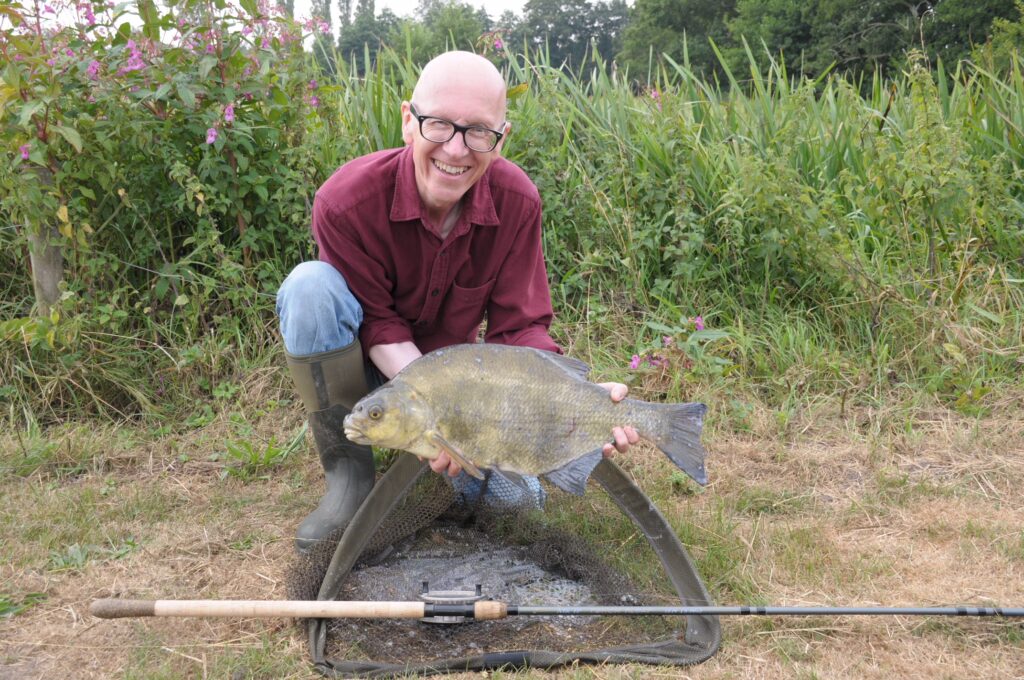
Big bream don’t always follow predetermined paths
This bit of fantasy (I’m being cheeky here, I know) originated in Coarse Fisherman magazine, as far as I remember, built on observations of bream in the Cheshire meres. I loved the whole concept that these huge bream followed paths around these waters, as reliably as tube trains on the Underground. It was so neat, such a perfect bit of watercraft, and made such satisfying sense of the fishes’ world. Only when I began to build up my own experiences of big bream did I come to see that the whole patrol route theory is questionable enough to be labelled myth. I did not give up the idea easily, but year after year I watched and sensed that bream move according to winds, food supplies, oxygen levels, spawning urges, and that their routes can vary from one day to the next. And if a shoal of bream finds itself in a gully where all its requirements are fulfilled, then it won’t move at all, not until conditions wholly change, forcing the shoal to move on.
MOON PHASES
I have always been in awe of those semi-magical anglers who watch the heavens, and make their predictions according to the wanderings of celestial bodies, the moon in particular. I’m hesitant in labelling this deeply attractive belief myth, especially as some great anglers of my acquaintance swear by lunar influences, but for me, it’s nonsense. I fished several thousand nights as a younger man, and I caught and/or failed on full moons, half moons and new moons. I caught fish on nights bright as silvery day, and I caught on nights when I could not see my hand in front of my face. Perhaps, just perhaps, the moon has an influence on tidal waters, and I’d love to hear more.
RISING RIVERS ARE RUBBISH
Well, they can be. It’s true that if cold water, snow melt, road run-off or dam release water comes downstream, it can be a wipe-out. But if a river rises hard in the summer or early autumn, well, I have had some of the best fishing of my life in those conditions. I have seen the Wye rise well over a foot an hour in the summer, and the chub have followed the waterline as it visibly climbs up the meadows. There they are, backs out, mopping up worms, spiders and beetles like their life depends on it. Not only that, but down on the gravel beaches, the barbel are working in exactly the same way, pushing over newly-drowned stones to get at the accumulated insect life of the summer. Never tell me that all rising rivers put fish off the feed.
WATERCRAFT IS EVERYTHING
I love the whole world of watercraft. It’s what Crabtree taught us, and it is what makes sense of the whole puzzlement of fishy lives. And watercraft has served me well, I’ll be honest. I’ll always take time to walk a water before fishing, and to try to read it like Crabtree taught us all. And yet, for every time that watercraft explains a conundrum, there is a time where it fails completely. Can I take you back to the Wye at the Red Lion yet again? In the old days I use to take my parties along the banks there, pointing out the top barbel swims and explaining their barbel appeal. Old, decaying salmon croys. Quick gravels in the early months. Ranunculus beds. Glides. Creases. Underwater snags. You know the score, the signposts that lead to barbel hang-outs. The trouble is, as I came to realise, that for every swim where I could point to reasons for barbel being there, there would be two cracking swims that seemed to hold no attraction whatsoever, to me at least. Watercraft is a good thing to learn, and as a good a starting point as any, but it’s a myth to think it will open all the gates to Paradise.
POWER OF THE MIND
I’m now going to come out with a bonkers myth of my own, in which I have complete and unsubstantiated faith. I believe in a myth that says the mind has a huge impact on our successes, and that getting our head straight is as vital as new line on the spool. Back in the day when I took groups of anglers out to India, my right hand man, Alan, and I would watch the group at the Heathrow check-in. We’d study them quietly for a few minutes, and then make our forecasts on how well they would do in the world of the mahseer. We were very rarely wrong. We’d simultaneously pick the top rod, the blanker, and the order of those in between. Those who wanted the prize of a mahseer too desperately, in some strange way pushed the fish ever further away from them. Those who were chilled, who were there for the whole experience, invariably attracted the fish to them and did well. Away from India, all my angling life, I have found that what goes around comes around, and that if you do the right things consistently, then you will have the success you deserve. They say every dog has its day, and so it does, and that is my myth. I do not say that confidence is not important because it is vital. As a guide, I have always preached the virtue of developing and hopefully perfecting at least one go-to, signature method that you can use when the chips are down. Mine is trotting a light stick float down a four to six foot deep, clean, gravel run. I just KNOW I will catch whatever is there and I invariably do… almost!
CANOES SPELL DISASTER
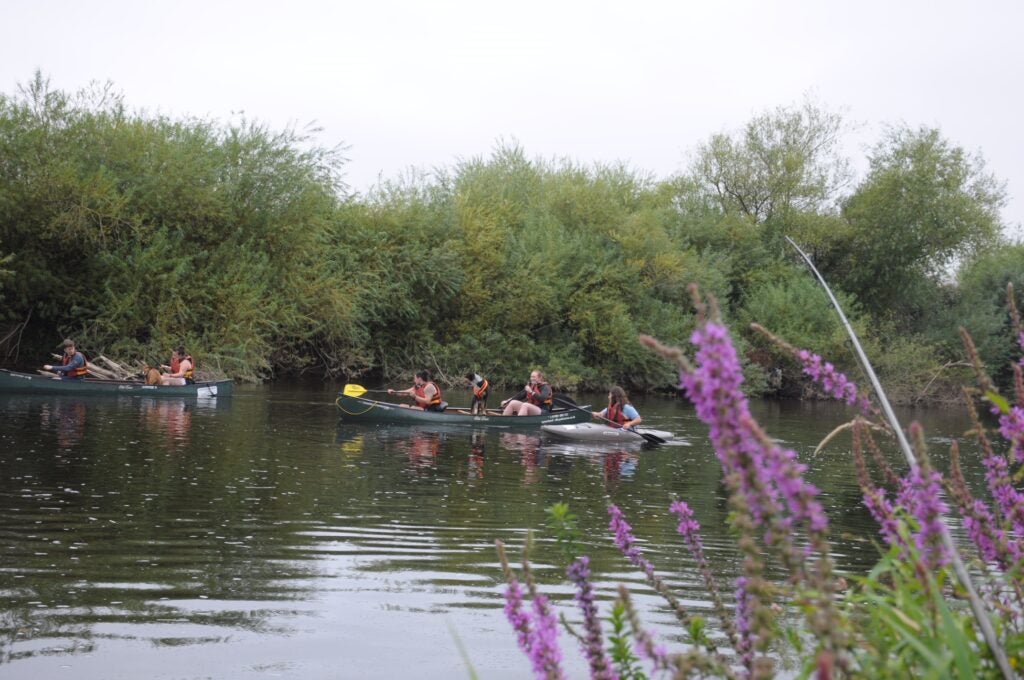
Canoes don’t always spell disaster
Yes, we all groan when canoes come through, and on small upper rivers they should not be there at all, so great is their environmental impact. But on deeper, slower rivers, where canoes skate well over the heads of feeding fish, I’ve found them an irritation, a hassle, but not a kiss of death to a day’s sport. Sometimes, the loathing of canoes is understandable, but something in your head and, even, a ready-made excuse for failure.
CORMORANTS ARE REFUGEES FROM THE DEPLETED SEA

European cormorants preparing for a feast of roach
How many times do we read/hear this myth? The story goes that we have raped the sea of sand-eels (true), and that cormorants as a result are forced to feed on inland waters. Balderdash. The cormorants that flock over here every winter are European freshwater feeders, distinct from our UK populations that are marine birds. We have treated our seas shamefully, but cormorants are not some scourge from a vengeance-seeking god, sent to punish us. We owe it to our seas to treat them better, and we owe it to our freshwaters to protect them better.
OTTERS SPELL DEATH
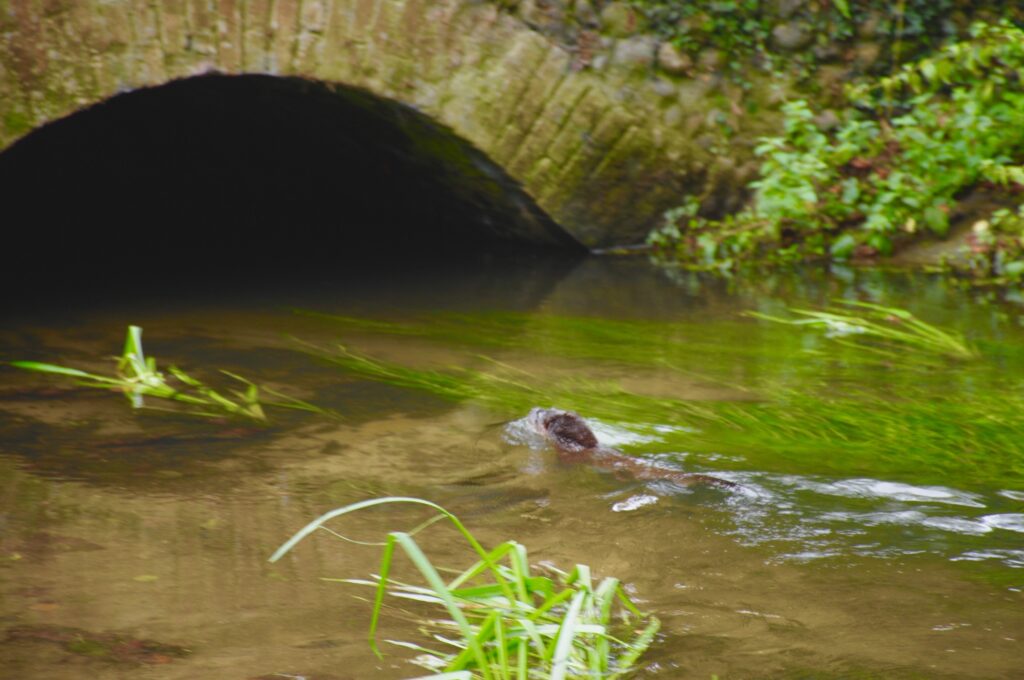
An otter on its way looking for crayfish?
I include this as a myth with the greatest trepidation. I do not want to court controversy for its own sake, and I am well aware of what happened to Pete Reading for saying what I believe. Like Pete, I have daily knowledge of the bankside and over quarter of a century, I have seen plenty of fish killed by otters. I have physically spilled tears at times, and yet I refuse to agree otters are the threat some would make them out to be. Otters are killers of older, weaker, fish. Otters make hay in very cold snaps when fish are semi-comatose. Otters can run riot amongst stocked fish, and wild fish that have not seen them before and have no defences. Otters can be devastating on smaller, shallower waters like silting estate lakes. But on larger, deeper waters, otters struggle to catch bigger fish in normal conditions. Otters struggle to catch wild fish, once they have learned the danger otters present – remember what I said about a fish and its memory span? Wild fish develop otter avoidance techniques on very many, if not most, waters that serve them well their lives through – bar the odd tragic accident or lapse in concentration. In all my years of experience, otters eat signal crayfish, water fowl, small mammals, and fish in that order of preference. They are, in effect, swimming foxes and they pursue prey that they find the easiest to catch. I can only state what I witness around me to be the case, and call out a myth when I see it.
The post Bailey & Coster – Our Way with… Angling Myths first appeared on FishingMagic Magazine.
Continue reading...
BREAKING BREAD

A message that was drilled into me when I first started fishing was not to tinker with bread. Experienced anglers and publications preached to avoid tainting this bait in any way. But as I boarded the club coach one day, I saw one of the older anglers with a big ball of bread paste in his hands, moulding some soft cheese into it. He obviously hadn’t read the right books! He worked on his special concoction all the way to the venue. What made it even worse was his heavily nicotine-stained fingers, which were helping to add a dirty orange tinge! To confound all the theories, when we got to our destination, forty-a-day man won the outing by a mile. Then there was canal maestro Billy Makin, using white pieces of punched bread in combination with a red continental groundbait. What was that all about? Had he forgotten his proper crumb feed when he made his videos? Having finally pushed all the taboos aside, I’m no longer afraid to experiment with bread.
BIG BUTTS

When I was working for Hardy and Greys, I saw something that suggested having big butt rings on rods might not be right. There is an award-winning concept in their Alnwick museum, developed way back in 1920. It’s a butt eye with a funnel, which channels the line through a small opening. This caught my interest because the new Microwave guide concept from American Tackle works to a similar principle. I tested some identical feeder rod blanks fitted with large and small butt guides. Amazingly, having a smaller ring directly above the reel helped to cast much further than a big diameter one. A top boffin explained what was happening. When line travels through a smaller first guide or ring, the coils of mono leaving the reel straighten out, creating less friction as it travels up the rest of the rod. An initial short burst of extra friction is far more beneficial than if the line coils all the way along the blank, in the way it tends to do with oversized butt rings.
FAKING IT

We can all understand mug fish making mistakes, engulfing imitation rubber baits that look like the freebies they have been feasting on. But anglers also catch streetwise specimens on synthetics, even when not surrounding them with anything that looks remotely the same. This ability to score so effectively has raised debate. Some people are adamant it’s the machine oils used in the moulding process that attract fish, leading to artificials being doused in all sorts of exotic flavours. The flavour aspect doesn’t wash with me. I suspect it’s a combination of visual interest and presentation, all about putting the fake stuff in the right place at the right time. Just look at the tubes of foam carp anglers currently use on zig rigs, which look like fag ends in some cases. I’ve seen carp and chub mistakenly swirling for discarded cigarette butts, so no surprises if they do the same for something else that looks vaguely like grub, particularly when it’s sitting in plain sight.
CLEAN WATER

A common anathema is not to use tap water to knock up groundbait, due to the amount of chloride it contains. The truth of the matter is, the amount of sodium and calcium chloride in our drinking water would have to be increased dramatically – by at least half – to have any effect. Only then would it influence the flavour of anything made with it, such as tea and coffee. Because lake or river water isn’t readily available when knocking up groundbait at home, tap water it has to be. I prefer to get mixes ready well in advance, rather than hurriedly on the bank, which doesn’t provide enough time for moisture to be properly absorbed. Rather than having poor consistency feed with lots of floating bits, I don’t have any problems pre-preparing my favourite groundbait recipes, which mostly have strong enough aromas to mask tap water, and just about anything else. Any anomalies in groundbait are speedily diluted once it’s fed into a big volume of water anyway.
DRUG FREE

Hempseed has lots of myths surrounding it, due to being part of the cannabis plant family. But the type of hemp we use can’t be grown into the stuff joints are made from, and it certainly isn’t powerful enough to be addictive to fish. Fishing hemp is derived from industrial plants, grown to produce hemp fibre for rope making and certain types of cloth. In my opinion, fish are attracted to hemp because it leaks off loads of attractive natural oils, alongside having a pleasant nutty aroma. It also resembles small water snails, a natural food for many species. The only reason cooked fishing hemp can appear to be addictive, is if it is fed regularly or in large quantities, to the point fish almost become reliant on it. That happened many years ago when I remember “Hempseed Corner” being a favourite hotspot on one famous river. The seed was banned on many venues due its overuse. Cooked fishing hemp isn’t a drug, otherwise it wouldn’t be so widely available.
MAGIC MIXES

Many people have tried to concoct secretive flavours and additives that fish can’t resist. Most of these potions arrive with a big fanfare, enjoy a brief period of success, and then fade away into obscurity. I remember a bubble gum flavoured powder that was supposedly a must if you wanted to win matches, along with an evil-smelling liquid anglers were secretly painting onto their hook baits. You might as well not turn up if you didn’t have any of the X-factor, was the message the advertising told us. But still the same old faces continued to catch all the fish. All the glitzy hype has gradually been replaced with flavours that do seem to make a slight difference. Most of us have learnt that sweet-smelling baits and feeds are better for silvers and cold-water situations. Stronger fishmeal versions work more effectively in fair weather and when fish are more active. Certain ingredients may be more potent at different times, but none contain a magic formula.
THE FRESH TEST

We live in an age where convenience is everything. Many anglers have changed the way they fish, relying on quick-fix baits like tins of hemp, corn and meat, along with pre-packed pellets and tubs of ready-to-go hook offerings. But convenience doesn’t work quite as well with conventional baits like maggots, casters and worms. If you’ve ever had the unfortunate experience of trying to catch with a bag of grey casters, a pint of dodgy maggots, or a tub of half-dead worms, you will know these options don’t come anywhere close to super-fresh gear. Some will have you believe it’s the angler’s fault, not down to the bait, when nothing is being caught. Don’t believe this, because all the top people I’ve ever had the pleasure to fish with are fastidious about the bait they use, whether it comes from a tin, bag or in live form. You can fish brilliantly but fail miserably if your bait is below par. Quality bait gives you confidence and quite simply pulls more interest.
SEEING RED

I’ve read lots of stuff about fish not being able to see red below a certain depth, to the extent that someone even produced a red line that was supposed to be invisible in water. It’s something to do with light penetration and physics apparently, but none of that affects me when catching on favourite baits like red coloured maggots, pinkies, bloodworm, pellets, wafters and groundbait. Even in the murkiest of waters, red is a top hue for catching fish like bream, roach, rudd, hybrids, carp, chub, perch and tench. Part of the reason freshwater fish home in on red, I suspect, is due to bloodworm being such a major part of their diets. They root about for this midge larvae in thick silt and because it’s bright red, it stands out like a sore thumb when disturbed. I believe fish can see this hue, otherwise why do predator anglers use red bait flags and poppers to give their dead baits extra appeal? I know lots of anglers who would be lost without red, including me.
INVISIBLE TOPS

A recent fad has been to paint top sections of poles white or grey, the theory being that fish won’t be able to see them hovering overhead. However, no matter what colour pole sections are, they will still produce a shadow, which probably looks black from below. Some have argued that herons are light grey, so fish can’t see them in the margins or shallows. If this really is the case, why do so many anglers wear camouflaged clothing, and not grey? Divers tell us the surface of water looks silvery when looking up, which gave us silver, white and clear plastic floats. But having used such designs in clear, shallow water, I’m not at all convinced this is such a good move. I remember trotting a small stream with a silver-coloured float and watching a shoal of dace part to let it through. I also recall using a clear waggler when trying to catch mullet in the crystal-clear Mediterranean, which spooked the fish so badly in the bright sunshine, I think they fled to the Atlantic Ocean!
INDUSTRIAL WHISKING

We all love keeping up with “in” gear, but need to be careful not to be fooled into becoming too weighed down with it. I’m always interested in new ideas if I think they will benefit my results, but occasionally will draw the line. Most of my mates have so much stuff now, they have to use four-wheeled trollies to get it to their swims. The items that really irk me most are the giant builder’s drills used for mixing groundbait. Even when some of my pals are several pegs away, I can hear what sounds like a helicopter taking off as they mix their groundbait with huge metal whisks. Doing the same job by hand might take longer, but does it really make much difference, particularly if you knock up your feed the day before an outing? I go fishing to get away from noise pollution, plus I don’t want to invest in a van to accommodate even more equipment. I also like knocking up groundbait by hand; it gives a much better idea if the consistency is right.
WINDING UP

Big pit style reels specimen anglers use are creeping into feeder fishing, especially now spodding is more widely practised. I can understand their use for the latter purpose, in combination with a pokey blank, but don’t believe all the hype they are essential if you want to cast any type of feeder more than 50 metres. Stepping up to a 4000-size reel makes good enough sense for long chucks, even perhaps a 5000. With super-thin braid it’s easily possible to launch streamlined feeders to the horizon with designs like this. So, why would you want to unbalance super-lightweight, high-carbon feeder rods with an even bigger brute of a winding machine? The spools on most standard feeder reels are big enough to quickly crank in mono, or thinner braid, without excess line twist. The problems I see with big pit designs are they lead you into using brutish, over-stiff rods to match up with them, followed by wanting to cast even more ridiculous distances.
NOT BEING FOOLED

It amuses me when sponsored anglers rave about rig lines, saying their brand is the best for its stated diameter. Of course it is, because it’s often one or two gauges thicker than stated! That’s why I use a micrometer to find out exactly what diameter my favourite hook length lines are. I also test their breaking strains, another area that tends to be highly exaggerated. I want to know exactly what I am using, rather than being fooled into thinking my line is something it’s not. This can make all the difference between having a good or a bad day. Low diameter line also tends to be supplied on over-large spools, another thing I don’t like. Carrying a good selection can take up far too much room in tackle trays. I wind my favourite diameters and breaking strains onto smaller spools, which doesn’t hinder their performance, but as you can see from the accompanying photograph, takes up far less space. The crucial thing is, the info on my rig line is much more truthful.
John Bailey – My Way with Angling Myths
Angling is such a hotchpotch of a sport. Science plays a part, but a supporting role. Most of what we know, or think we know, comes from our experiences, or those of others, and every experience is essentially unique. Then there is the stubborn refusal of fish to give away the secrets of their lives. Until fish talk, all we can do is observe and make conclusions that are as often wrong as they are right. So for hundreds of years, since Walton and before, anglers have made deductions that are little more than assumptions gleaned from age-old inaccuracies. But we cling to these angling myths to give us hope and confidence. It’s an uneasy feeling to think we know next to nothing about the fish we would like to catch. When a theory comes along, we are likely to adopt it and shoehorn our experiences to reinforce it. In such a way myths, without much or any foundation, are born and prosper through word of mouth, books and magazines, and now through websites. I’m going to explode or question angling truisms that I believe are myths but, then, what do I know really? I’m casting in the dark as blindly as any angler. I’d say that more myths and legends exist in the salmon world than any other, but for this debate, I’ll stick with our beloved coarse fish primarily.
THE BIGGEST ROACH HANG BACK
This is a beautiful example of what I describe. For all my life I have been told that in any gathering of roach, the grandmothers live in the twilight zone, great silver and crimson shadows on the edge of the action. I’ve written about this myself, and I have watched for it, and even believed I have seen this behaviour with my very own eyes. But have I, in reality? What I have seen is big roach showing alarming caution, and keeping close to cover, and checking every bait for imperfections, but as for “hanging back”, I’m not so sure. My friend Joe, who I have talked about before, lived in a wood that skirted the Wensum, and he baited a deep hole with Vitalin and corn twice a day for over a year. Moreover, he positioned a GoPro there to record precisely what was going on. There is no way the bigger roach hung back, but rather they were the first in there, bullying smaller fish out of the picture ’till they themselves were replete. That is why I say now that the first cast is always the most important cast, and if that is a good one, the best roach of the day could be the result.
FISH FORGET
We have all heard scientists say that fish have memory spans of three seconds or whatever. This is the biggest load of boilies I have ever heard in my life. My experience (myth or not?) is that once a fish experiences something, it NEVER forgets. I could give a thousand examples, but one will do. The Red Lion water on the middle Wye. I think it is fair to say that I, Roger Miller, Paul Ashton and Peter Smith were about the first to open up the barbel fishing here in the late 1980s. In those first seasons, we could find yet another new barbel swim, and catch forty or more fish from it in a single weekend. But then, after a few of those weekend hammerings, the swim would go quiet, and the barbel would wind up the shutters. By the end of the Nineties, the whole six miles had become difficult, and some swims nigh-on impossible. Long-stay fishing, night fishing and heavy baiting had educated those barbel to the highest degree of erudition, but when the foot and mouth disaster came along early next century, and the fishery was closed for a year, everyone predicted a bonanza on angling’s resumption. Not a bit of it. As I had predicted, those barbel had not lost one whit of their caution, and were as difficult to catch as they ever had been. Fish forget? Don’t make me laugh!
BREAM PATROL ROUTES

Big bream don’t always follow predetermined paths
This bit of fantasy (I’m being cheeky here, I know) originated in Coarse Fisherman magazine, as far as I remember, built on observations of bream in the Cheshire meres. I loved the whole concept that these huge bream followed paths around these waters, as reliably as tube trains on the Underground. It was so neat, such a perfect bit of watercraft, and made such satisfying sense of the fishes’ world. Only when I began to build up my own experiences of big bream did I come to see that the whole patrol route theory is questionable enough to be labelled myth. I did not give up the idea easily, but year after year I watched and sensed that bream move according to winds, food supplies, oxygen levels, spawning urges, and that their routes can vary from one day to the next. And if a shoal of bream finds itself in a gully where all its requirements are fulfilled, then it won’t move at all, not until conditions wholly change, forcing the shoal to move on.
MOON PHASES
I have always been in awe of those semi-magical anglers who watch the heavens, and make their predictions according to the wanderings of celestial bodies, the moon in particular. I’m hesitant in labelling this deeply attractive belief myth, especially as some great anglers of my acquaintance swear by lunar influences, but for me, it’s nonsense. I fished several thousand nights as a younger man, and I caught and/or failed on full moons, half moons and new moons. I caught fish on nights bright as silvery day, and I caught on nights when I could not see my hand in front of my face. Perhaps, just perhaps, the moon has an influence on tidal waters, and I’d love to hear more.
RISING RIVERS ARE RUBBISH
Well, they can be. It’s true that if cold water, snow melt, road run-off or dam release water comes downstream, it can be a wipe-out. But if a river rises hard in the summer or early autumn, well, I have had some of the best fishing of my life in those conditions. I have seen the Wye rise well over a foot an hour in the summer, and the chub have followed the waterline as it visibly climbs up the meadows. There they are, backs out, mopping up worms, spiders and beetles like their life depends on it. Not only that, but down on the gravel beaches, the barbel are working in exactly the same way, pushing over newly-drowned stones to get at the accumulated insect life of the summer. Never tell me that all rising rivers put fish off the feed.
WATERCRAFT IS EVERYTHING
I love the whole world of watercraft. It’s what Crabtree taught us, and it is what makes sense of the whole puzzlement of fishy lives. And watercraft has served me well, I’ll be honest. I’ll always take time to walk a water before fishing, and to try to read it like Crabtree taught us all. And yet, for every time that watercraft explains a conundrum, there is a time where it fails completely. Can I take you back to the Wye at the Red Lion yet again? In the old days I use to take my parties along the banks there, pointing out the top barbel swims and explaining their barbel appeal. Old, decaying salmon croys. Quick gravels in the early months. Ranunculus beds. Glides. Creases. Underwater snags. You know the score, the signposts that lead to barbel hang-outs. The trouble is, as I came to realise, that for every swim where I could point to reasons for barbel being there, there would be two cracking swims that seemed to hold no attraction whatsoever, to me at least. Watercraft is a good thing to learn, and as a good a starting point as any, but it’s a myth to think it will open all the gates to Paradise.
POWER OF THE MIND
I’m now going to come out with a bonkers myth of my own, in which I have complete and unsubstantiated faith. I believe in a myth that says the mind has a huge impact on our successes, and that getting our head straight is as vital as new line on the spool. Back in the day when I took groups of anglers out to India, my right hand man, Alan, and I would watch the group at the Heathrow check-in. We’d study them quietly for a few minutes, and then make our forecasts on how well they would do in the world of the mahseer. We were very rarely wrong. We’d simultaneously pick the top rod, the blanker, and the order of those in between. Those who wanted the prize of a mahseer too desperately, in some strange way pushed the fish ever further away from them. Those who were chilled, who were there for the whole experience, invariably attracted the fish to them and did well. Away from India, all my angling life, I have found that what goes around comes around, and that if you do the right things consistently, then you will have the success you deserve. They say every dog has its day, and so it does, and that is my myth. I do not say that confidence is not important because it is vital. As a guide, I have always preached the virtue of developing and hopefully perfecting at least one go-to, signature method that you can use when the chips are down. Mine is trotting a light stick float down a four to six foot deep, clean, gravel run. I just KNOW I will catch whatever is there and I invariably do… almost!
CANOES SPELL DISASTER

Canoes don’t always spell disaster
Yes, we all groan when canoes come through, and on small upper rivers they should not be there at all, so great is their environmental impact. But on deeper, slower rivers, where canoes skate well over the heads of feeding fish, I’ve found them an irritation, a hassle, but not a kiss of death to a day’s sport. Sometimes, the loathing of canoes is understandable, but something in your head and, even, a ready-made excuse for failure.
CORMORANTS ARE REFUGEES FROM THE DEPLETED SEA

European cormorants preparing for a feast of roach
How many times do we read/hear this myth? The story goes that we have raped the sea of sand-eels (true), and that cormorants as a result are forced to feed on inland waters. Balderdash. The cormorants that flock over here every winter are European freshwater feeders, distinct from our UK populations that are marine birds. We have treated our seas shamefully, but cormorants are not some scourge from a vengeance-seeking god, sent to punish us. We owe it to our seas to treat them better, and we owe it to our freshwaters to protect them better.
OTTERS SPELL DEATH

An otter on its way looking for crayfish?
I include this as a myth with the greatest trepidation. I do not want to court controversy for its own sake, and I am well aware of what happened to Pete Reading for saying what I believe. Like Pete, I have daily knowledge of the bankside and over quarter of a century, I have seen plenty of fish killed by otters. I have physically spilled tears at times, and yet I refuse to agree otters are the threat some would make them out to be. Otters are killers of older, weaker, fish. Otters make hay in very cold snaps when fish are semi-comatose. Otters can run riot amongst stocked fish, and wild fish that have not seen them before and have no defences. Otters can be devastating on smaller, shallower waters like silting estate lakes. But on larger, deeper waters, otters struggle to catch bigger fish in normal conditions. Otters struggle to catch wild fish, once they have learned the danger otters present – remember what I said about a fish and its memory span? Wild fish develop otter avoidance techniques on very many, if not most, waters that serve them well their lives through – bar the odd tragic accident or lapse in concentration. In all my years of experience, otters eat signal crayfish, water fowl, small mammals, and fish in that order of preference. They are, in effect, swimming foxes and they pursue prey that they find the easiest to catch. I can only state what I witness around me to be the case, and call out a myth when I see it.
The post Bailey & Coster – Our Way with… Angling Myths first appeared on FishingMagic Magazine.
Continue reading...
